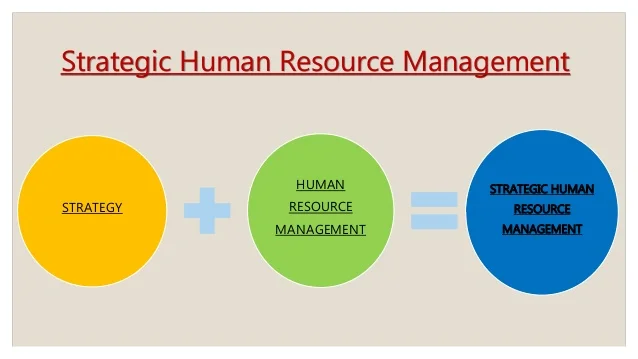Strategic
Human Resource Management

A. What
Is Strategic Human Resource Management?
1. Strategic
HRM means formulating and executing human resource policies and practices that
produce the employee competencies and behaviors that companies need to achieve their
strategic aims.
B. Improving Performance: The Strategic Context
C. Improving
Performance: HR As a Profit Center
D. Sustainability and Strategic Human Resource
Management – today’s emphasis on sustainability has important consequences for
human resource management. HR policies
and practices can support a firm’s sustainability strategy and goals.
E. Strategic
Human Management Tools
1. Strategy Map – summarizes how each
department's performance contributes to achieving the company’s overall strategic
goal.
2. HR scorecard – a process for assigning
financial and nonfinancial goals or metrics to human resource management-related
strategy map chain of activities required for achieving the company’s strategic
aims.
3. Digital Dashboards – presents the manager
with the desktop graphics and charts, showing a computerized picture of how the
company is doing on all metrics from the HR scorecard process.
HR Metrics, Benchmarking,
and Data Analytics
A. Improving
Performance: Through HRIS: Tracking
Applicant Metrics for Improved Talent Management
B. Benchmarking
– occurs when an organization compares the practices of high performing companies’
results to your own, to understand what makes them better.
C. Strategy
and Strategy-Based Metrics – benchmarking is only part of the process. To
reveal the extent to which your firm’s HR practices are supporting its
strategic goals, strategy-based metrics are used to measure the activities that
contribute to achieving the company’s strategic aims.
D. What Are HR Audits? – these audits are a way
for an organization to measure where it currently stands and determines what it
has to accomplish to improve its HR functions.
E. Evidence-Based HR and the Scientific Way of
Doing Things – evidence-based HR is the use of data, facts, etc. to support HR
proposals, decisions, practices,
and conclusions. This requires managers to be more scientific in making
organizational decisions. This approach requires objectivity, experimentation,
quantification, explanation, prediction, and replication.
F. Trends Shaping HR: Digital and Social Media
1.
Talent Analytics – tools that enable employers to analyze, in new ways,
employee data both on obvious things (like employee demographics, training, and
performance ratings), but also data from new sources (like company internal
social media sites, GPS tracking, and email activity).
G.
Trends Shaping HR: Science In Talent
Management
V.
High-Performance Work Systems –a
set of human resource management policies
and practices that together produce
superior employee performance.
VI. Employee Engagement Guide for Managers:
Employee Engagement and Performance
A. The
Employee Engagement Problem – Gallup distinguishes among engaged employees “who
work with passion and feel a profound connection to their company,” and not
engaged employees who are essentially “checked out,” and actively disengaged
employees.
B. What
Can Managers Do to Improve Employee Engagement? – managers improve employee
engagement by taking concrete steps to do so, such as: providing supportive
supervision, making sure employees understand how their departments contribute
to the company’s success, see how their efforts contribute to achieving the
company’s goals, get a sense of accomplishment from working at the firm, and
are highly involved – as when working in self-managing teams.